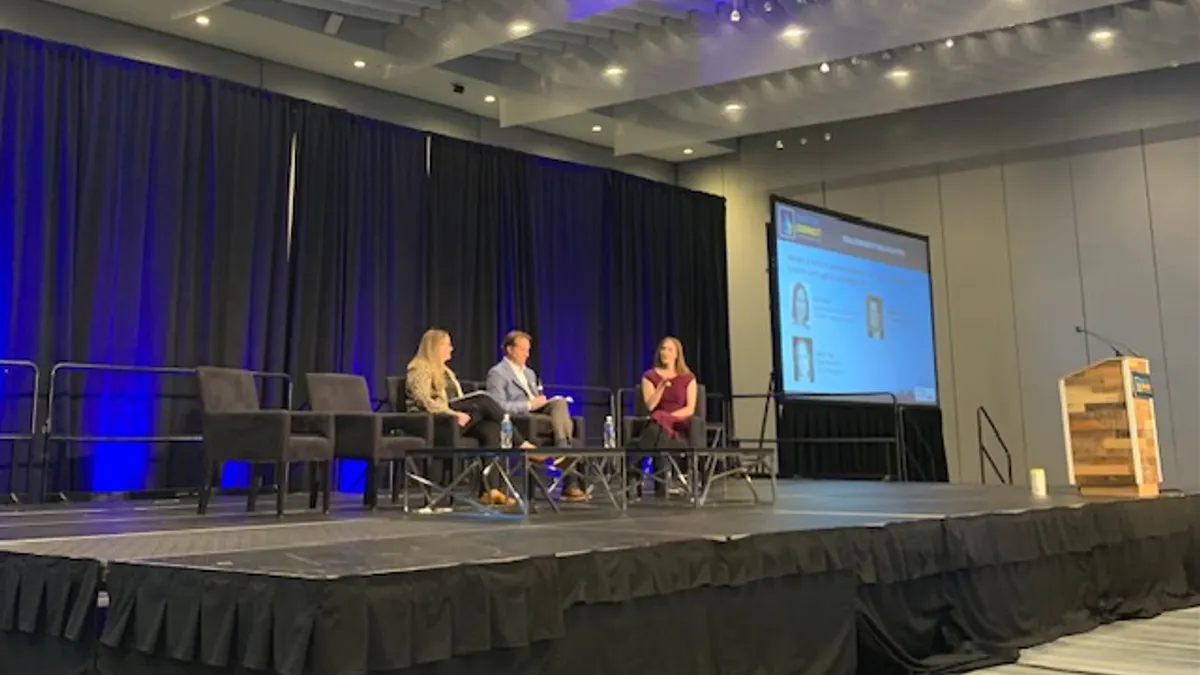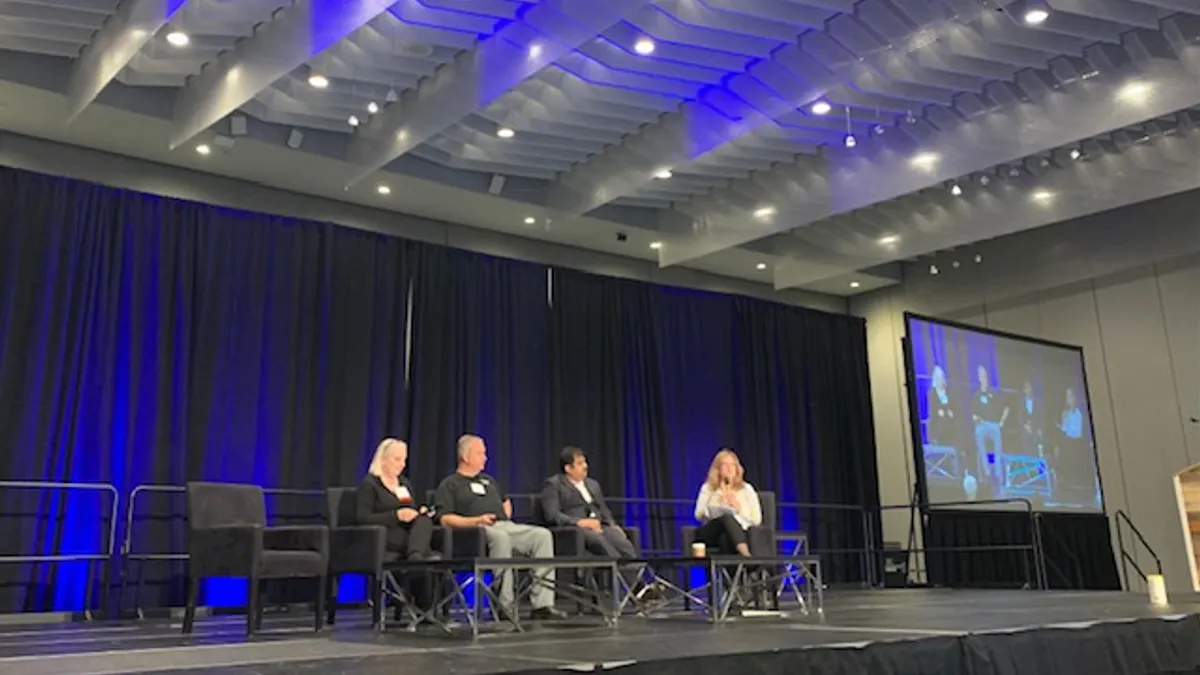City officials and technologists convened in National Harbor, Maryland, this week at the Smart Cities Connect Conference and Expo to discuss top-of-mind questions, solutions and novel strategies. These were some of the recurring themes:
Prove it and the funding will follow
“If you can do a demonstration project, usually the money will follow,” said Don Jacobson, IT business partner for innovation at the city of Las Vegas.
During a keynote with other city leaders on how to successfully innovate, Jacobson shared the example of an autonomous shuttle pilot several years ago in Las Vegas. The pilot helped the American Automobile Association get riders’ thoughts on autonomous vehicles. Jacobson suggested that it also helped the city later obtain federal transportation funds to support a forthcoming autonomous shuttle meant to help people living in a historically underserved area get to medical appointments. “So we did that demo project and that led to some really big money to answer an equity concern that we had,” Jacobson said.
Jacobson further recommended establishing an innovation zone, like Las Vegas’ district, because they attract partners and no-or-low-cost projects.
City leaders must also be persistent with their procurement offices, said Genesis Gavino, the Dallas city manager’s chief of staff, speaking during a panel related to smart streetlights.
“Don't let them tell you no,” said Gavino, who also leads resilience and digital equity efforts in the city.
“I always come forward with examples of how it's been done in cities already because if you can provide them with a way that it's already been done, they're less likely to say no,” Gavino said. “Cities are risk averse. So if you already have demonstrated that a city can do it, they're more willing to work with you on how we can modify our requirements so that we can make things happen.”
Technology moves fast and city rules don’t always keep pace, Gavino added. Learning from other cities helps show procurement and legal staff “that this has been done, and it's not a major red flag.”
When funds are harder to access, cities have to get more resourceful, said Brittaney Carter, Atlanta’s chief technology officer.
“When you're talking about taxpayer dollars, you have to be really cognizant. In IT we use the phrase ‘fail fast.’ You know, taxpayers aren’t typically a fan of failing at all,” Carter said. The city is interested in public-private partnerships and those with higher education entities. “It really does require a lot of creativity, and really pushing the envelope.”
Federal funding isn’t a magic bullet
For both public or private entities in this sector, having enough staff and resources remains a fundamental challenge, said Kristin White, chief operating officer at the Intelligent Transportation Society of America, speaking at a session about the adoption of digital infrastructure in transportation. But certain considerations when allocating federal funding can help.
“Even with the [Infrastructure Investment and Jobs Act], trillions of investment, we still do not have enough people and money to do these things,” she said. With digital infrastructure, “the return on investment can be more,” she said.
Managing enforcement for scooter programs without digital infrastructure, for instance, could take hundreds of staff, but that wouldn’t “serve the equitable and sustainable goals that we talked about and value in our society right now.”
Gavino previously noted that for federal funding that is available, it’s critical that vendors and outside partners understand a city’s priorities. “If you don't have an understanding of the vulnerabilities and the disinvestment in your community, you don't have a leg up in really leveraging your application,” Gavino said.
But it’s a two-way street, Gavino said. “When vendors come to the city just pitching their equipment, their software, whatever it is, but it's just a template email … you don't have an understanding of our priorities as a city and how we are prioritizing equity in our investments – that's a red flag for me immediately.”
Whether it’s funding from the bipartisan infrastructure law, the recent Inflation Reduction Act, or the American Rescue Plan Act, “understanding the equity factor in your city is really important.”

Interoperability remains elusive
Cities want to exchange information, but the vertical solutions they deploy in smart waste, streetlights, or the like, each use proprietary data structures, security mechanisms and application interfaces, said Wilfred Justin, Amazon Web Services’ head of AI/ML enablement and partnerships, during a keynote on smart cities’ digital platforms. Open-source tools and standards have emerged, but it’s a patchwork of adoption. The tool spotlighted in the panel is FIWARE, an open-source technology intended for developing smart solutions, digital twins and data spaces.
Another example is Mobility Data Specification, a tool designed to enable right-of-way regulation and two-way communication between mobility companies and local governments. It’s promulgated by the public-private partnership Open Mobility Foundation. In the session on transportation’s digital infrastructure, Jarvis Murray, for-hire transportation administrator in the city of Los Angeles Department of Transportation, explained how the city has used MDS to help regulate around 25,000 scooters. Through digital infrastructure, the city stays connected to the companies’ vehicles, and vice-versa, monitoring location, use, geofencing and more.
“To be to be quite frank, there are some things I just don't think government should do, or they shouldn't be their main thing,” Murray said. Public-private partnerships are key. “I feel confident that when you have someone else on your team that's not necessarily the government, but real technology innovators and people who really think about these things,” that’s the most helpful.
















